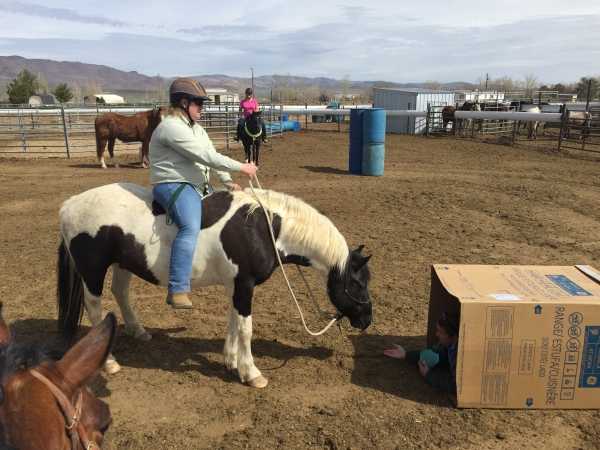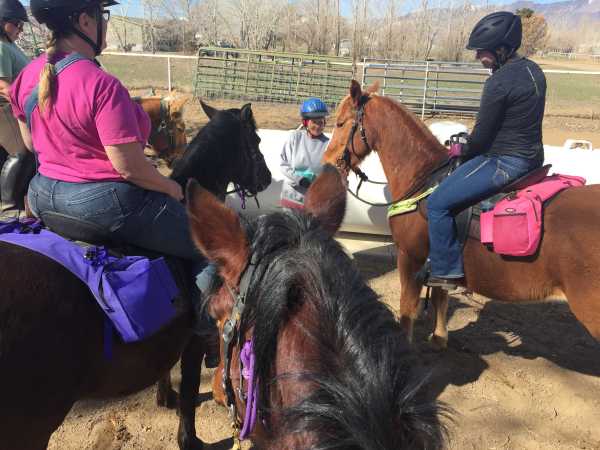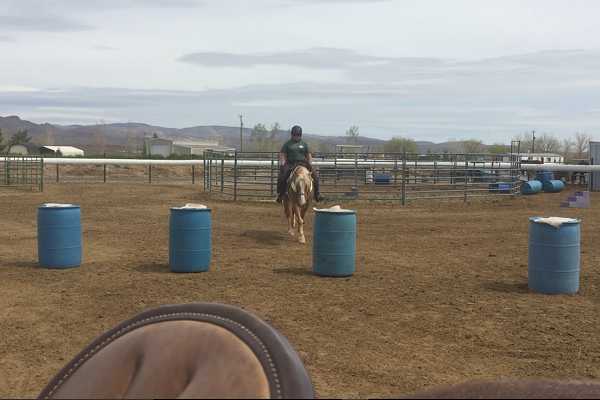|
Please note: This page is a continuation from
Part Two.
Developing effective search horses.
Our experiences have shown that most horses excel when training methods are based on improving their basic instincts.
Horses are naturally alert and aware. They like to observe and understand what is going on around them. Our job is to encourage those natural instincts and behaviors, shaping them to better serve our needs. A horse that is allowed to be a horse and that contributes to the mission using DNA-driven talents tends to be less stressed, less spooky and can engage in a mission for a longer period of time without becoming fatigued.
We don't mess around throwing firecrackers at horses or setting hay bales on fire. We are not the riot squad.
It does not serve our mission to force horses to endure extreme stimulus and be conditioned to "turn off" their native detection skills. Our horses need to process their environment "real time" and provide us with communication signals when they detect something unusual or an object that they have been tasked to locate. It's our job to encourage their investigative abilities and their confidence when processing unexpected situations.
Of course we desensitize our horses to increase their stability in chaotic situations. However our approach is to develop communication, trust and confidence, not scare them. We want them to investigate, not dread what may be coming next.

We motivate horses to engage in scent detection by adapting clicker training techniques. Finding the hiding subject or locating the correct scented object out of several based on a reference scent results in a treat reward. Thus the horse's native curiosity is developed further through positive feedback when the effort is successful.
What we didn't expect was how competitive some horses would be in finding a person or object. We soon learned that we had to be careful when deploying multiple horses to avoid the exercise from turning into a kind of equine rugby match. We had to find a balance between maintaining the horses' exuberance for the drills without becoming physically possessive of the "target" and the associated reward.

The advantages of equine scent detection.
While air scent tracking by horses is not intended to replace canine air scenting, horses provide some natural advantages due to their physical design and survival behaviors.
- Horses can travel long distances at a relatively efficient pace.
- Properly selected and conditioned horses can cover extremely rough country.
- Horses' noses are higher off the ground and are more likely to detect airborne drift scents.
- Horses don't pant when hot or fatigued, but rather their nostrils tend to flair, thus increasing rather than diminishing their olfactory sensitivities.
- Horses tend to combine scent detection with acute hearing and monocular vision, providing a spectrum of sensory input that can be "fine tuned" to facilitate effective search behaviors.
No hands. The horse matches a reference scent with the correct choice out of several.
Neither the horse or rider knew which barrel held the correct "target" scent.

While horses can provide a number of search-related advantages, it is not the intent of this information sheet to undervalue of the use of search dogs under appropriate conditions. Each mode has both similar and distinctively separate applications.
| 


